At Gijisi Juldarigi Tug-of-War Culture Festival
Students of Azerbaijan, the United States and scores of other countries in Korea captivated tens of thousands of people in Dangjin City and other Koreans from all parts of the country and from abroad, including Japan, on April 12, 2015--with their colorful, eye-catching traditional costumes and cheerful, playful and happy smiles and giggles. They attracted the eyes of not only the people on the ground but also of the cameras of the KBS TV drone that hovered over thousands of people pulling the 100-meter long straw ropes of the Gijisi tug-of-war match?as well as the dozens of the foreign students studying in Korea. (List of participating students is at the end of this article.)
Mayor Kim Hong-jang of Dangjin City invited the foreign students in Korea as well as well as the ambassadors and the Seoul bureau chiefs of international media a couple of days earlier to impress them that Dangjin Gijisi Juldarigi (tug-of-war) was 500 years old and must get recorded by the UNESCO as world cultural heritage.
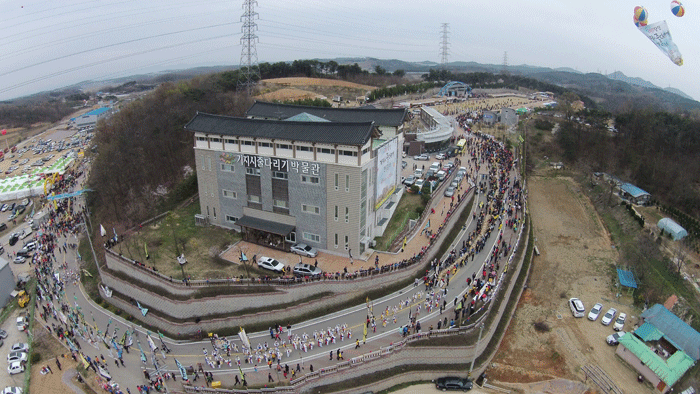
If that was what he had wanted, he got it. It is because, as well as the foreign envoys, the foreign students in Korea are a group of very important people for Korea and their own countries?and for the world, for that matter.
Commonly called Yuhaksaeng, the international students have a special place in Korea because, after graduation, they will eventually play a leading role in their own countries as well as in the diplomatic relations with Korea and in various other areas, especially economic cooperation as many of them will work in the business companies of the two countries.
Yuhaksaeng, which also applies to the Korean students studying in foreign countries, is a target of much envy among Koreans because, after their return to Korea, their educational achievements overseas are a great asset in getting good jobs in all segments of Korean society, particularly as in the educational institutions as university faculty members.
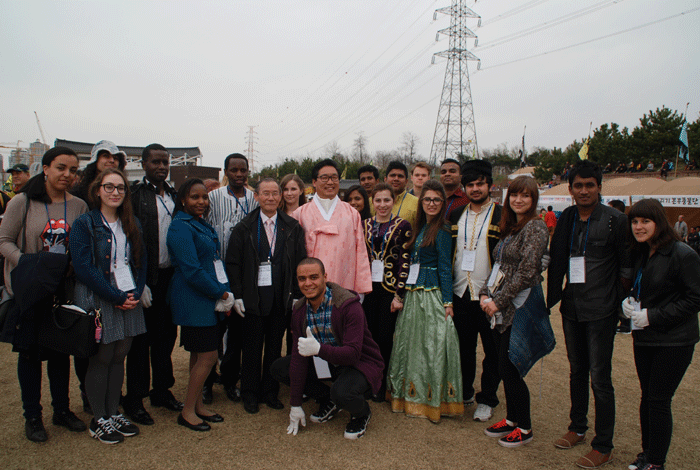
A special tribute must be made to President Kim In-chul of Hankuk University of Foreign Studies (HUFS), as well as some ambassadors such as Ambassador Tissa Wijeratne of Sri Lanaka, who kindly supported the Dangjin City government and The Korea Post Media in their effort to expose the 500-year-old traditional culture of Korea to the foreign students and also to satisfy the desire of the foreign students to learn the rare traditional cultural event of Korea.
The Dangjin Gijisi Juldarigi is the Intangible Cultural Asset Number 75 of the Republic of Korea designated by the Central Government, in fact, started on April 9 in a four-day run and it was the last day when the foreign students took part in the festival.
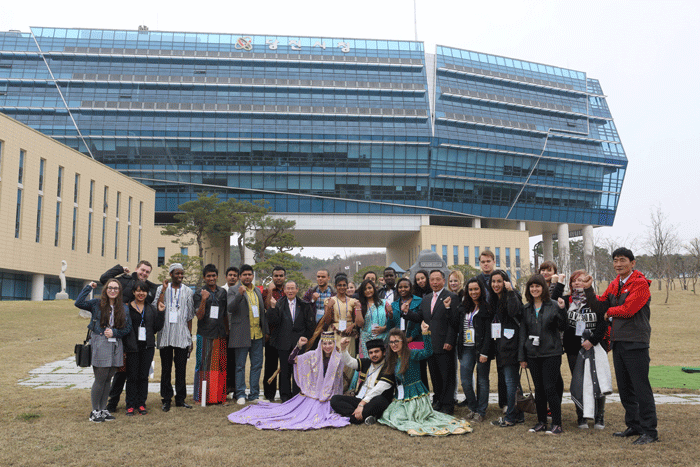
Earlier on the day, the foreign students visited the Dangjin City Government Hall and the City Council Building and inspected various facilities of the buildings.
At the City Council Hall, they were invited to inspect the facilities and some of them even sat on the seat of the Chairman of the Council where the playful students lifted the gavel posing as the Chairman to the delightful laughs of the fellow students. They had a group photo taken at various places of the City Council Hall as well as the City Government Building, which an official of the City explained was built in the shape of a ship as Dangjin was one of the principal port cities on the West Coast of Korea.
The students then were led to tour in and around the Dangjin Gijisi Juldarig Museum where they inspected various exhibits and photos. The places they visted there included a fishmonger’s store where were on display various imitation fishes such as Pollack and hairteits.

After the tour of the Museum, the students were invited to join the Gijisi tug-of-war near Mayor Kim Hong-jang and Chairman Park Young-kyu of the Organizing Committee of the Festival about the center of the 100-meter-long ropes. They enthusiastically pulled the ropes, together with thousands of citizens of the Dangjin City, dragging them up to the venue of the contest in front of the Dangjin Gijisi Juldarigi Museum.
Amidst the drum beating and gong sounds, the pullers of the ropes on both sides tested their strength and energy. They ended up with a draw as the Uppers Stream Team and Downstream Team (formed with villages on both sides of the river) won one match but lost the other.
In fact however, according to Mayor Kim, it did not actually matter because according to the time-honored legends related with the Dangjin Gijisi Tug-of-War match if the Upperstream Team won there would be peace and stability throughout the year and if the Downstream Team won there would be a bumper crop. “In this game, there are only winners and no losers,” said Mayor Kim.

The ropes used in the Tug-of-War consist of the thin straw ropes and the main thick ropes. The thin ropes are made by the people with hands but the main thick ones are made by a rope-making machine due to the thickness.
The total length of the main ropes, as was briefly mentioned earlier, is over 100 meters. The two competing groups of villagers have the flags of the different colors, namely the Blue Flag by the villages from the Upperstreamers and the Red Flag by the villagers from the Downstream Village.
The participating villagers in the Gijisi Tug-of-War match are not so much interested in winning the contest as in getting the bumper crop for all the people of the region.
There are two different kinds of ropes; one is named Female Rope while the other one is named the Male Rope. The participating villagers cut a piece of rope from the Female and Male Ropes and take them home believing that they will cure sterility and waist aches.
The man who carries on the tradition of the Gijisi Tug-of-War is named Lee Woo-young who observes the pre-match Confucian-Buddhist-Taoist rite at the Guksu-dang Shrine at the Guksu-bong Peak.
The Dangjin City is promoting the Gijisi Tug-of-War for the purpose of preserving the traditional local cultural asset, to introduce the historical significance of the Game and to establish the City’s qualification to inherit the cultural heritage.
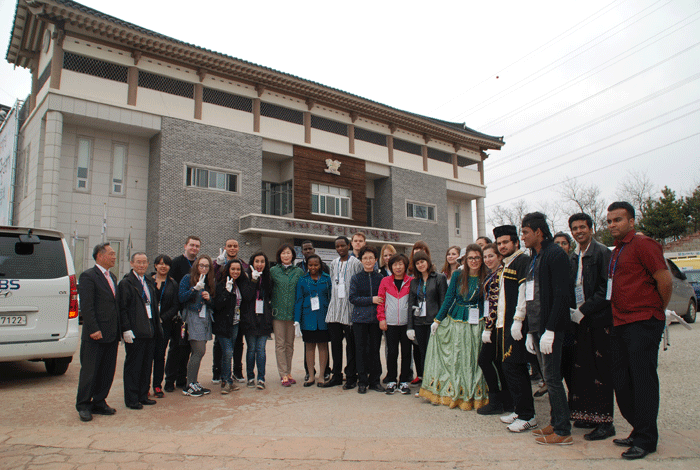
Speaking at a recent interview with The Korea Post, Mayor Kim said that the Dangjin Gijisi Tug-of-War Festival is held on the theme of “Euiyeocha! The Rope Binds Us in One” and through maximum utilization of the physical facilities of the Gijisi Tug-of-War Museum in the City.
There are various interesting related events, which offer a lot to see and enjoy.
The Festival is held in such a way that as many Korean and foreign tourists will attend and take part in the Festival as possible through increased public relations activities to develop the Game on an international scale.
The Gijisi Tug-of-War was used as a means of strengthening the unity of the people which they needed in time of danger to the Dangjin region over 500 years ago. This time, the Gijisi Tug-of-War is used in further strengthening the unity of the people of Dangjin through the rope.
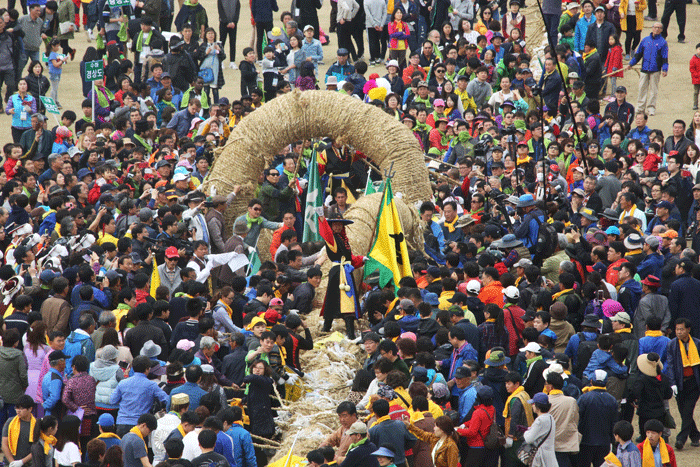
The contest also takes place with the participation of contestants from the sister cities of the Dangjin City such as Namdong-gu District of Incheon Metropolitan City, the Yongsan District of the Seoul Special City, and the Yuseong-gu District of the Daejeon Metropolitan City, with which the Dangjin City has an exchange-cooperation relationship.
The tug-of-war is usually considered a game, but according to the traditions of agricultural regions throughout Korea and Asia, it is done in the form of an expression of wishes for peace, bumper crop, good health and good luck.
There are two theories concerning the origin of the Gijisi Tug-of-War.
One theory is that the local villagers started the tug-of-war to overcome a disaster in the region for the unity and solidarity of people 500 years ago. The other is that they started the game under the influence of Pungsujiri (theory of divination based on topography). The villagers started playing the game to press the Gi (energy) of the ground.
Gijisi Tug-of-War is based on agriculture as in the case of many other such games. But the ropes of the game are especially made by Jul-teul which is a variation of Ju-dae-teul that is a tool that fishermen use for making anchor ropes. In this sense, the Gijisi Tug-of-War also contributed to the business of the people at the market.

The Dangjin City, according to Mayor Kim, is situated in a blessed region where the sea and the land meet. Dangjin, he said, is one of Korea's largest rice producing regions and yielder of various other agricultural products.
Dangjin is also a city of culture, which has preserved traditional culture and customs including the world's largest Gijisi Tug-of-War with a 500-year-old history. As well, Dangjin is a dynamic city that is going through a successful transition into a new industrial city thanks to its industrially strategic location.
Delightful sights and experiences are waiting for the tourists in Dangjin which has the Waemok Village, Sapgyo Lake Tourist Destination, Grand West Coast Bridge and Nanjido Beach along the long coastline with clean, clear water of the Yellow Sea.
Dangjin has also become one of the most important producers of the agricultural and fisheries products. The Haenaru rice, which was given to each foreign student in a small bag on the occasion, is grown on the fertile soil in the path of the great sea breeze, as well as the well-being agricultural and seafood products. They are very popular among consumers nationwide and they are also exported overseas.

The West Coast Expressway and Dangjin Port, serving as the gateway for trade, facilitate the regional development. Dangjin, which has emerged as one of the core cities of the Chungcheong Province, is transforming into an outpost for trade with China and other countries of the world.
Dangjin has embarked on a new journey as Dangjin City on Jan. 1, 2012. Dangjin has strengthened its welfare policies for the residents and workers, and this is evidenced by the fact that Dangjin contains Korea’s largest industrial complexes of 4,297,520 square meters.
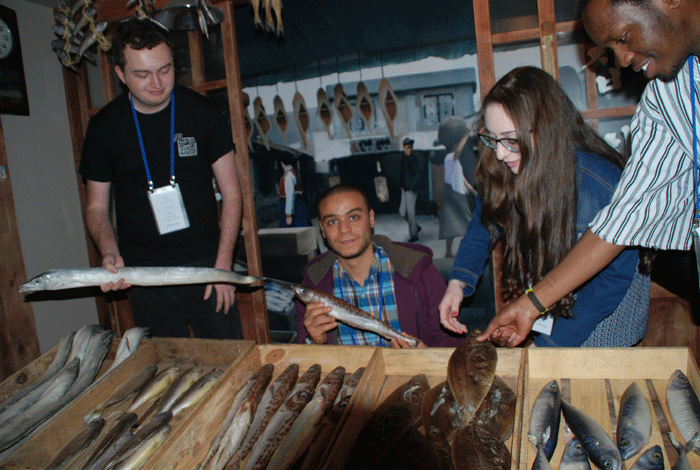
Dangjin boasts a steel industry with a production capacity of many million tons of crude steel. Dangjin prioritizes the environment preservation and the agricultural industry and has been maintaining a balanced development while continuously improving its tourism resources and traditional culture.
The City is noted for a large number of cultural festivals, which include the Sunrise Festival held to send the old year and usher in the New Year. People visit here and pray for success in the New Year as they watch the sun rise.
Waemok Village and Hanjinhannaru, where the festival takes place, are situated in the northernmost region of Chungcheongnam-do as well as Dangjin. Because of its heavily dented coast, people in this region can enjoy the beautiful sunrise despite its location on the West Coast. The sun rises from the horizon and sets into the sea because the peninsula protrudes to the north.
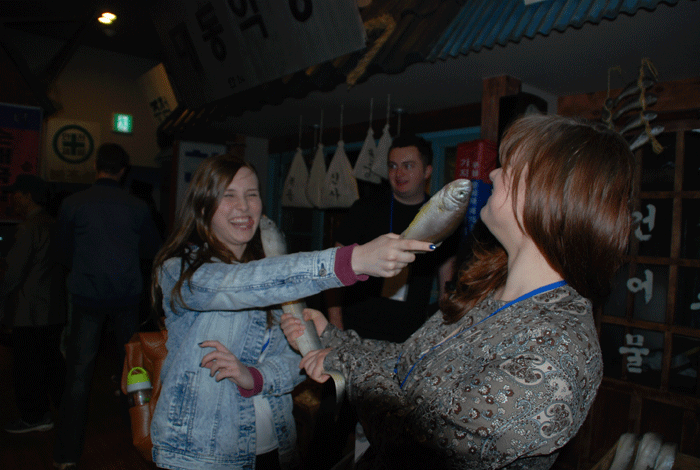
List of Foreign Student Representatives: Azerbaijan Samadi Bayrali, Gunay Aliyeva, Aysel Abdiyeva; Colombia Andrea Liseth Baez Becerra; Egypt Sami Mohamed Rashad; France Boutria Linda, Ghariba Benmamar; Italy Francesca Alvano; Kenya Kinyajui G. Kinyata, Pierinnah Kagweni, Lenny Ntonja; Mexico Nora Isabel Ontiveros Calzada, Ana Mario Villalpando Soria; Poland Klaudia Eliza Woziak, Liwia Miranda Wezik, Anna Aleksandra Boczar, Patrycja Okonsaka; Russia Kukueva Anastasia, Tetin Vadim; Sri Lanka Rajitha Kawshal Ya, Menaka Madushani, Manisha de Silva, Kanchana Manamperi, Malith Nirmal; USA Kyle Jones. (Lee Kyung-sik, publisher, The Korea Post)



